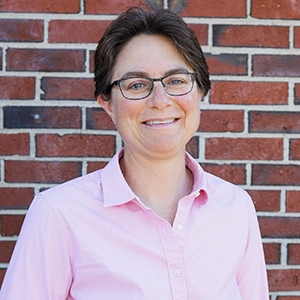
The holiday season brings both happiness and hardship. The three-week period between Thanksgiving and the winter break is marked by celebrations as well as disrupted schedules. While some students become exuberant in their anticipation of vacations, presents, or visits with family, others worry about food insecurity and whether they have a safe place to go when not in school. Even the most veteran teachers struggle with the discombobulated chasm between Thanksgiving and winter break. When I worked in a PS-8 school, I considered it an absolute nightmare:
- Well-crafted, finely-tuned classroom routines became dismantled by sugar-infused festivities.
- Disjointed weeks, not to mention the confusing “it’s-a-Tuesday-on-a-Monday” schedule, wreaked havoc on students’ transitions between home and school.
- Colleagues, particularly those with children, now had to juggle the ensuing drama at home and in school.
Today, teachers and administrators not only face the above holiday horrors but also pressure to get through mandated curriculum, administer formative assessments, and navigate a politically-charged cultural environment. Given these stressors, a potential survival strategy for the next few weeks (and beyond) may feel counterintuitive: focus on creativity.
Creativity — More Than a Kitschy Coloring Sheet
Too often, conversations about creativity focus solely on the final Product. I cringe when thinking about early attempts to “do something creative” for the holidays. It was mayhem in the computer lab as second graders completed what amounted to digital coloring sheets and seventh graders complained that everything was lame.
It took many attempts before short-term endeavors actually engaged students in December. Writing this post reminded me of an incredibly challenging sixth grade class that spent the three weeks between breaks working in teams to write and produce magazine articles featuring Beowulf. Concepts ranged from Sports Illustrated’s “athlete of the year” to People’s “sexiest man alive.” The project honored their interests and motivations, let them collaborate, and allowed them to have fun.
The focus on creativity got this group through to the break, but it had little to do with their final Products. Instead, it was the emphasis placed on cultivating a creative learning environment and the creative processes that ensued.
To Engage Students Through December — Focus on the 4Ps
Given all of the challenges confronting educators, many may not feel as though they have the capacity to launch something new before winter break. To balance the benefits of giving students creative learning opportunities with educators’ realities, we’ve developed an openly-available framework based on Rhodes’ 4Ps of Creativity – Product, Place (which the original framework refers to as Press), Process, and Person. As leaders look for strategies to get their teachers through the next few weeks, creativity could serve a dual purpose: supporting students in the near term while setting the stage for new opportunities down the road.
Place — Cultivate a Creative Learning Environment
Each year, most schools and systems must navigate The December Dilemma — how they address a variety of religious, cultural, and secular holidays. With a nationwide uptick in reported incidents associated with antisemitism and islamophobia in schools, this balancing act may currently feel even more precarious.
When teachers focus on cultivating a creative learning environment, they not only consider how a physical space is configured but also whether the learning objectives, materials (both analog and digital), and activities:
- Integrate students’ background knowledge, interests, needs, and strengths;
- Incorporate students’ cultural, linguistic, and social identities, allowing them to make connections between their lives and the content;
- Prompt students to design practical, relevant solutions for their community; and
- Encourage students to explore new ideas or perspectives.
Process — Nurture Creative Thinking Skills
In cultivating a creative learning environment, teachers then begin to nurture creative thinking skills — processes that meaningfully engage students in problem-solving, require them to demonstrate critical thinking, and encourage them to make connections across subject areas.
Intentionally designing activities that support and encourage creative Process do not have to be overwhelming. Teachers can:
- Introduce concepts or ideas beyond core content areas and encourage students to generate ideas and form connections;
- Prompt divergent thinking by asking students to solve problems in a variety of different ways;
- Facilitate discussions that ask students to think about concepts from different angles or perspectives; and
- Encourage students to intentionally elaborate and build on their own ideas as well as those of others.
Looking ahead to 2024: Get Ready to Unleash Student Creativity
Sometimes students do need winter-themed coloring sheets to decompress, and teachers may have an existing creative Product that their classes love. These are wonderful opportunities to meet students’ (and possibly teachers’) immediate needs. However, a creative Person possesses key habits of mind, such as self-direction, curiosity, agency, and growth-mindset. While it may not be possible to nurture all of these traits in the next two weeks, teachers might be able to leverage this time to help students through to the break and prepare them for more opportunities in the new year.

